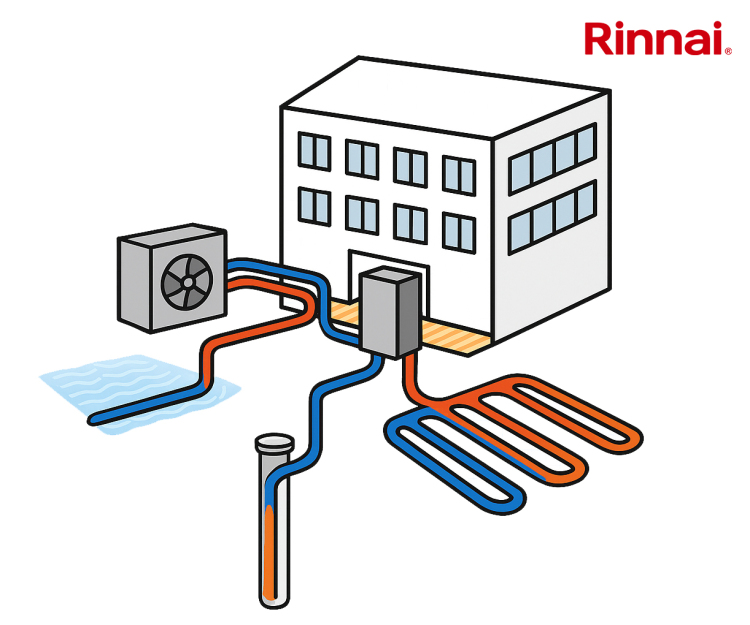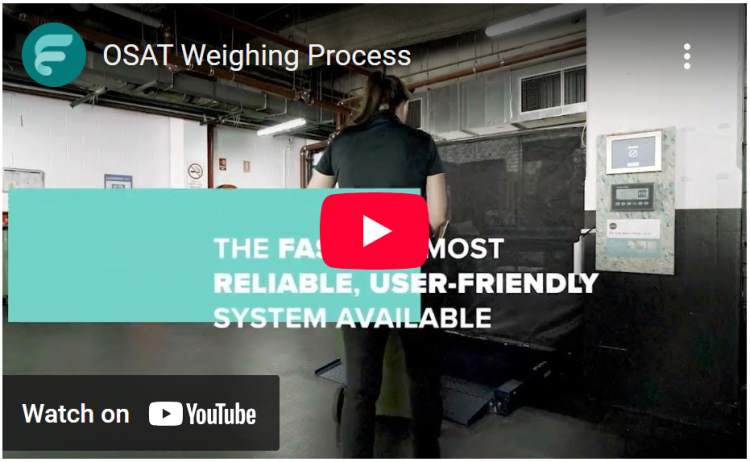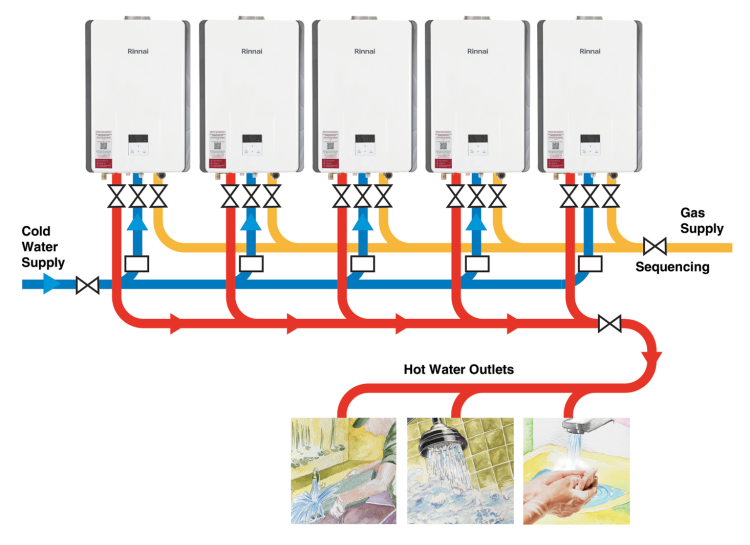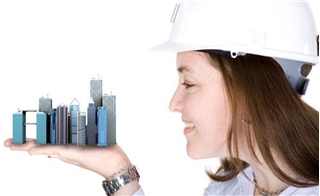05 March 2024
In an era where sustainability is not just a buzzword but a necessity, the focus on achieving net-zero targets has significantly influenced the realm of facilities management.
This Opinion piece delves into how these environmental goals can be met by both effective hard and soft FM practices, integrating green technologies, energy-efficient systems, and sustainable practices in building maintenance and operations.
Charlie Green is Senior Research Analyst at Comparesoft. FM, smart buildings, workplace management, IoT and sustainability are his key research areas. Charlie holds a masters degree which allows him to offer data led and empirical research driven reports.
Green Technologies and Energy Efficiency
The global drive towards net-zero targets has catalysed a transformative shift in hard facilities management, with a heightened focus on energy efficiency and the adoption of green technologies. Buildings are a significant contributor to worldwide energy use, accounting for approximately 40 per cent of global energy consumption and 36 per cent of CO2 emissions, according to the International Energy Agency (IEA). In this context, optimising building systems for energy efficiency is not just a step but a leap towards achieving net-zero ambitions.
The integration of green technologies in hard FM is a multifaceted approach, involving the deployment of renewable energy sources, advanced building materials, and eco-friendly design principles. Solar panels, for instance, have become increasingly prevalent, converting sunlight into electricity and significantly reducing reliance on fossil fuels. Similarly, wind turbines, biogas systems, and geothermal energy solutions are being integrated into building designs to harness natural resources for power generation.
LED lighting is another cornerstone of this green revolution. LEDs are vastly more energy-efficient than traditional lighting systems, consuming up to 90% less power. The adoption of smart lighting systems, a prime example of energy management, leads to significant reductions in energy consumption whilst reducing business costs.
Advanced HVAC Systems: Pioneering Energy Efficiency
HVAC systems are critical components of hard FM and major energy consumers. Modern systems, such as ground-source heat pumps, leverage the stable temperatures of the earth to provide heating and cooling more efficiently than conventional methods. Additionally, smart HVAC systems equipped with sensors and AI algorithms can optimise temperature and airflow based on real-time data, significantly reducing energy waste.
Case Study: The Edge, Amsterdam
This architectural marvel exemplifies how intelligent design and technology can revolutionise energy efficiency in hard FM. The Edge employs a state-of-the-art building management system that meticulously controls energy use. Its design includes an expansive array of solar panels, capable of generating more electricity than the building consumes.
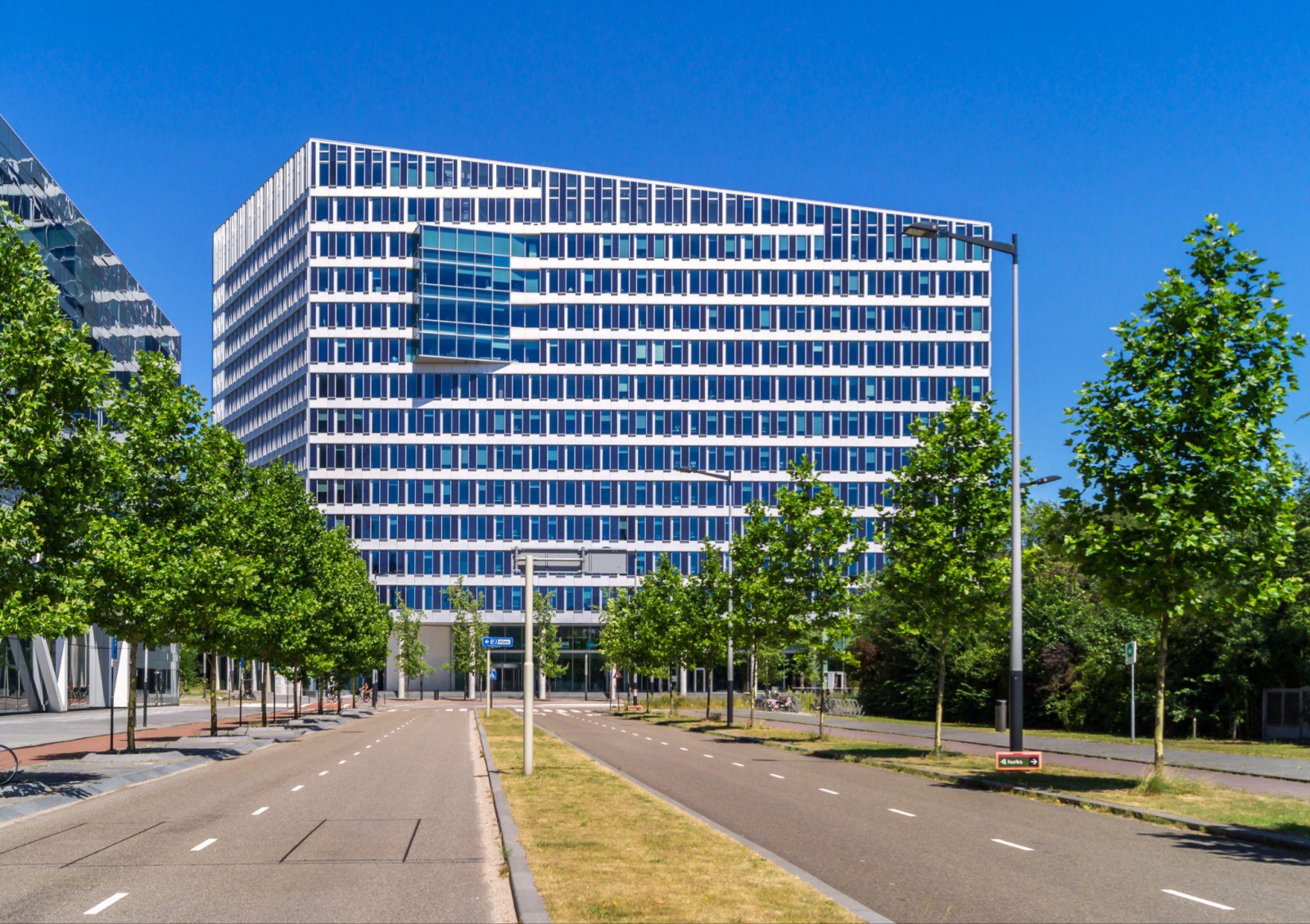
Picture: a photograph showing the exterior of The Edge building. Image Credit: Shutterstock
The building's LED lighting is not just energy-efficient but also part of a broader IoT network, contributing to an adaptive and responsive environment. The sophisticated HVAC system at The Edge utilises ground-source heat pumps, a testament to the potential of renewable energy in reducing carbon footprints. As a result of these innovations, The Edge boasts a staggering 70 per cent reduction in energy consumption compared to typical office buildings, setting a benchmark for future developments.
Sustainable Building Materials and Practices
According to the United Nations Environment Programme, the building and construction sector accounts for 36 per cent of global energy use and 39 per cent of energy-related carbon dioxide emissions. Therefore, the adoption of sustainable materials and practices is not just a trend but a necessity for reducing the environmental impact of buildings.
The choice of building materials plays a crucial role in the sustainability of a construction project. Materials with lower carbon footprints, such as recycled steel, bamboo, and reclaimed wood, are increasingly preferred. These materials offer the dual benefits of reducing the demand for virgin resources and minimising waste. For instance, the use of recycled steel can save up to 75 per cent of the energy needed to produce steel from raw materials, as per the World Steel Association.
Case Study: Salesforce Tower, San Francisco
Salesforce Tower in San Francisco serves as an exemplary model of these sustainable practices. During its construction, a significant emphasis was placed on using recycled materials, thereby minimising the environmental impact associated with extracting and processing new resources. The building's design also incorporates advanced water conservation measures, including a blackwater recycling system. This system treats and recycles wastewater on-site, reducing the building's potable water consumption by an estimated 30,000 gallons per day.
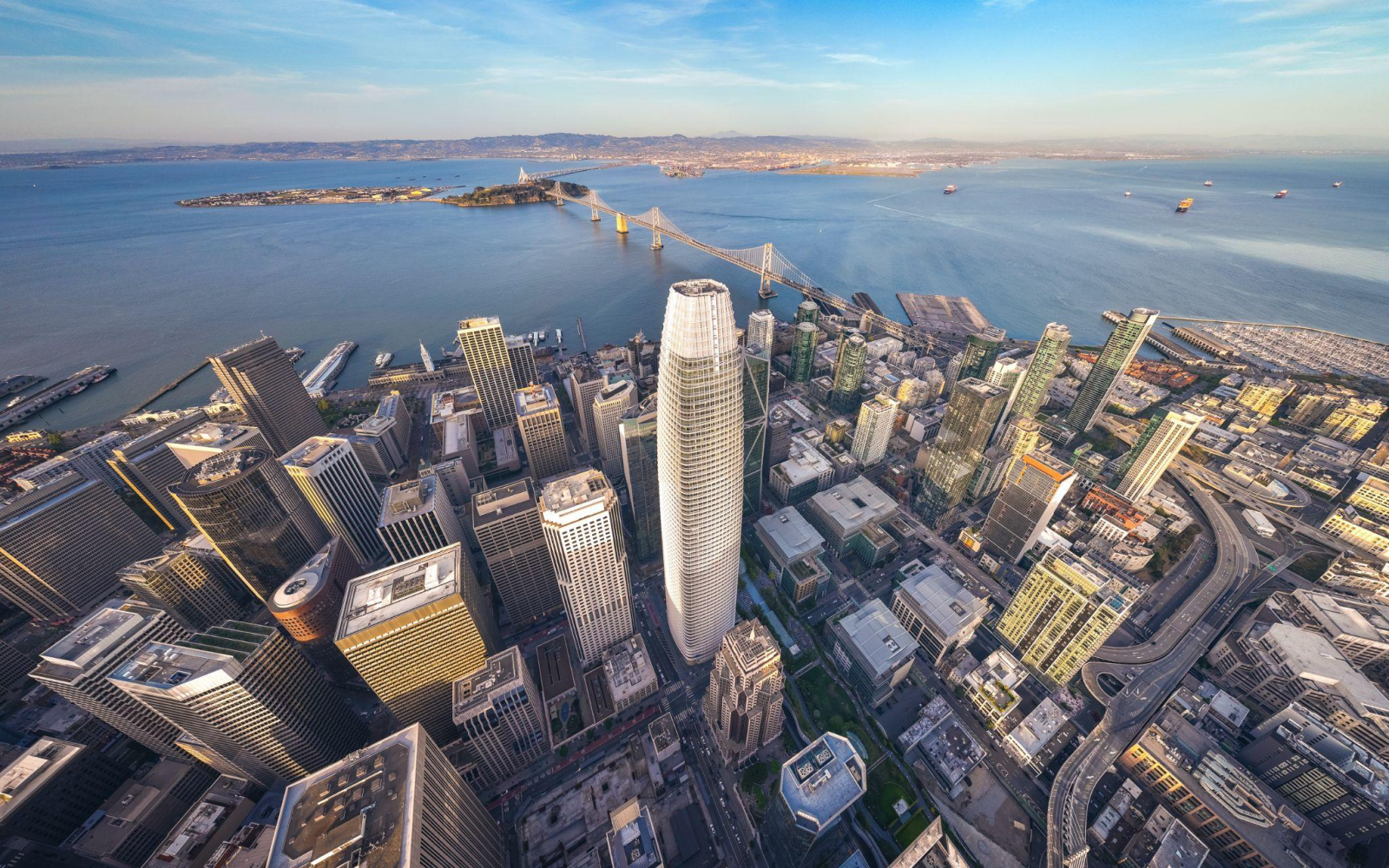
Picture: a photograph showing a cityscape of San Francisco, including the Salesforce tower. Image Credit: Shutterstock
The Role of Soft FM on Achieving Sustainability Initiatives
The net-zero movement's influence extends beyond hard facilities management to reshape soft FM practices, emphasising environmental stewardship in everyday operations. These practices are not just about reducing carbon footprints; they also play a crucial role in promoting health, well-being, and sustainability in the workplace.
Traditional cleaning products often contain chemicals that can be harmful to both the environment and human health. In contrast, environmentally safe cleaning products minimise the release of volatile organic compounds and other pollutants, thereby enhancing indoor air quality and reducing environmental harm.
In landscaping, the adoption of sustainable practices includes designing green spaces that require less water and maintenance, thereby conserving natural resources and promoting biodiversity. Similarly, effective waste management strategies, such as comprehensive recycling programs and composting, play a vital role in reducing landfill waste and greenhouse gas emissions. The Environmental Protection Agency (EPA) reports that recycling and composting activities in the United States prevented the release of approximately 186 million metric tons of carbon dioxide equivalent in 2017, equivalent to taking over 39 million cars off the road for a year.
In conclusion, the role of facilities management in achieving net-zero targets is indispensable. Through embracing innovative technologies, sustainable practices, and a holistic approach to managing buildings and offices, FM professionals can drive significant change. As we move forward, the collaboration between FM professionals, businesses, and policymakers will be crucial in ensuring that our buildings and workplaces are not only efficient and functional but also sustainable and resilient, paving the way for a greener, more sustainable future.
Picture: a photograph showing wooden building blocks with green coloured icons on the front, all representing a form of green technology, such as a solar panel, a tap and an EV charging point. A hand can be seen placing a block with the words "net zero" on the top of the pile. Image Credit: Shutterstock
Article written by Charlie Green | Published 05 March 2024
Share
Related Articles
West Berkshire and Reading Borough Councils Pilot Smart Energy Systems
A pilot project to create a smart energy system in Thames Valley has successfully connected four of West Berkshire Council’s sites to the growing network.
The...
Read Full Article
Big Energy Saving Week 2022
Big Energy Saving Week, January 17-23, is the perfect opportunity for businesses to kick-start their energy efficiency plans for 2022 on the road to net-zero.
COP26 in...
Read Full Article
Lack of Performance Design Awareness Hindering Built Environment Decarbonisation
Greater awareness of performance-based building design could be the key to more energy-efficient buildings and rapid progression in the built environment’s...
Read Full Article
Tesco Establishes £2.5 Billion Credit Facility Tied to Sustainability Targets
Tesco Supermarket has announced the creation of a £2.5 billion revolving credit facility, with interest rates based on environmental performance...
Read Full Article
Product Focus | How Can the Revolving Green Fund Help FM Teams?
Energy management initiatives are key in achieving long-term carbon reduction goals but, in the current economic climate, companies may struggle to find the capital...
Read Full Article
Spotlight Interview – UK Energy Management
It may sound like a simple task, however with complex contracts and billing for energy supplies, and an ever-changing legislative environment for the industry,...
Read Full Article
Energy - Spending To Accumulate
More than half of global organisations plan to increase energy efficiency spending in the next 12 months according to the Johnson Controls' 2018 Energy Efficiency...
Read Full Article
Scrutinising MEP Systems to Unlock Carbon Savings in the Built Environment
Can the built environment unlock substantial carbon savings by scrutinising mechanical, electrical and plumbing systems?
Max Gibbens, Senior Environmental Consultant...
Read Full Article
The UK’s Largest Net-Zero Housing Development
Barratt Redrow is set to deliver the UK’s largest net-zero carbon housing development.
With 576 new homes, a new primary school, open space, community buildings,...
Read Full Article
Revolutionising HVAC – Reducing Emissions for a Sustainable Future
Luke Gorman from ABM explores the impact of HVAC on the environment and how facilities management now functions as a strategic ESG partner.
Luke graduated from...
Read Full Article
.gif)

.gif)
.gif)
.gif)


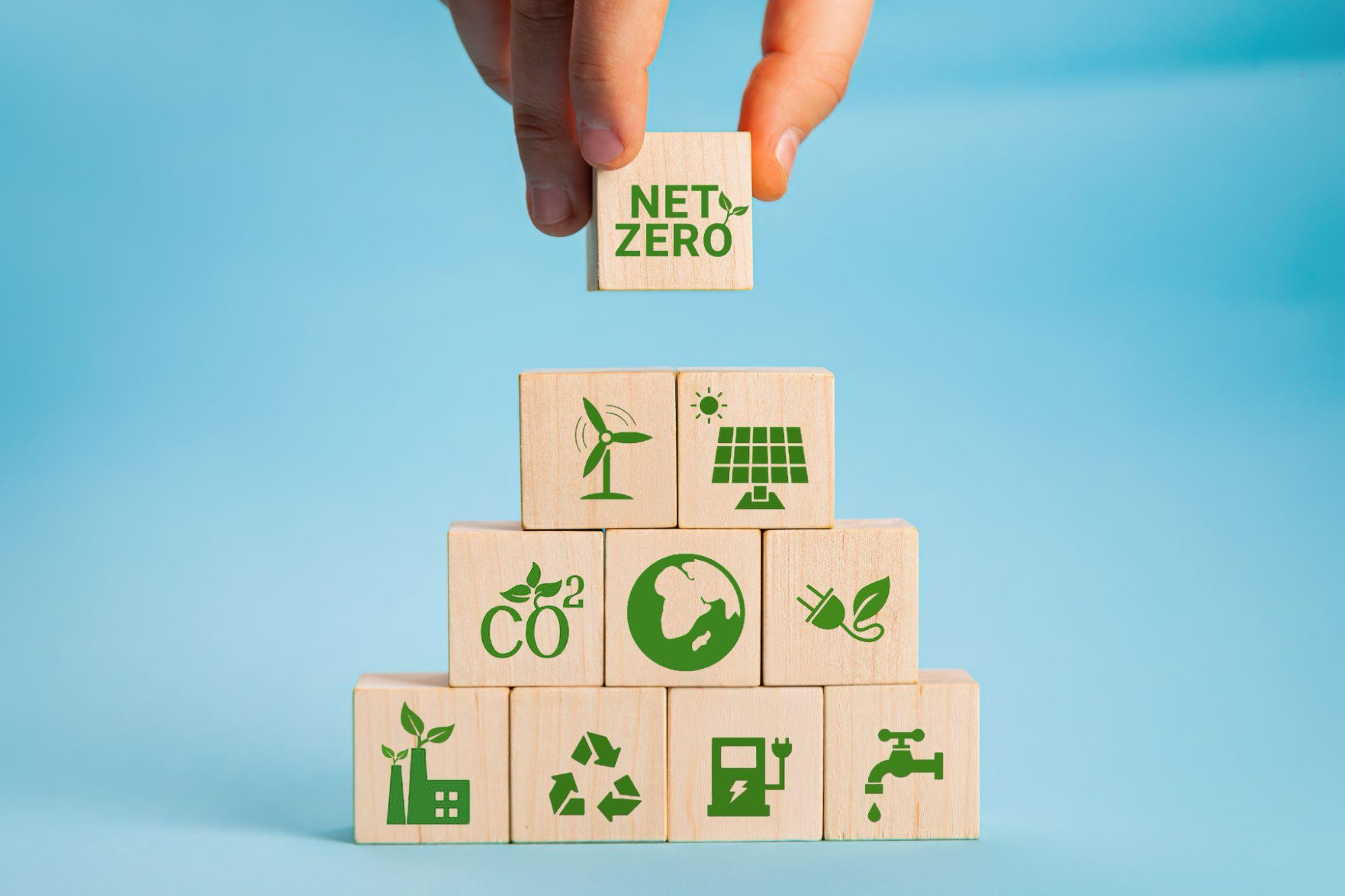



.png)

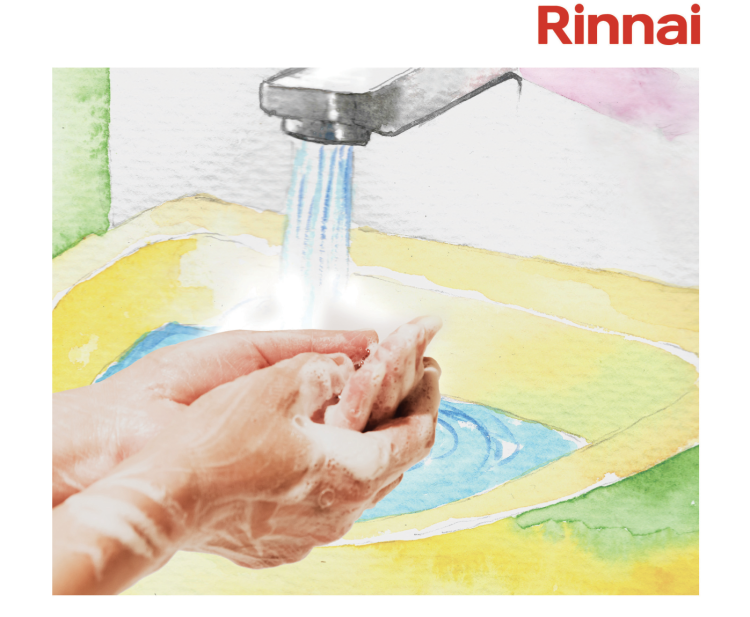
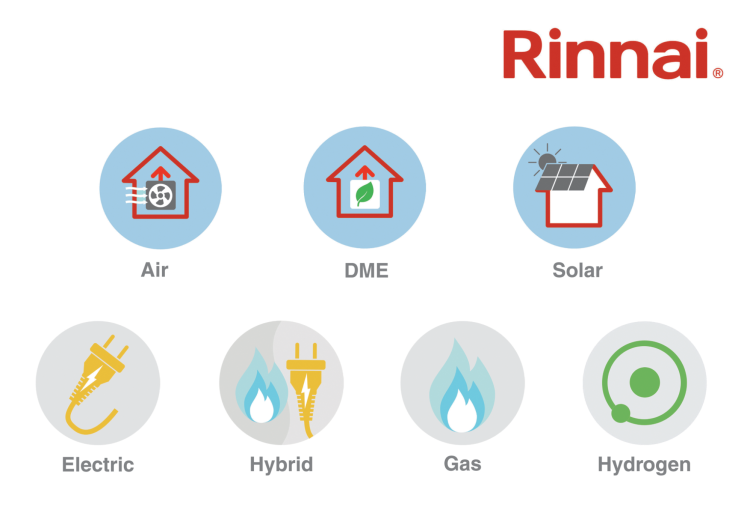
.png)
